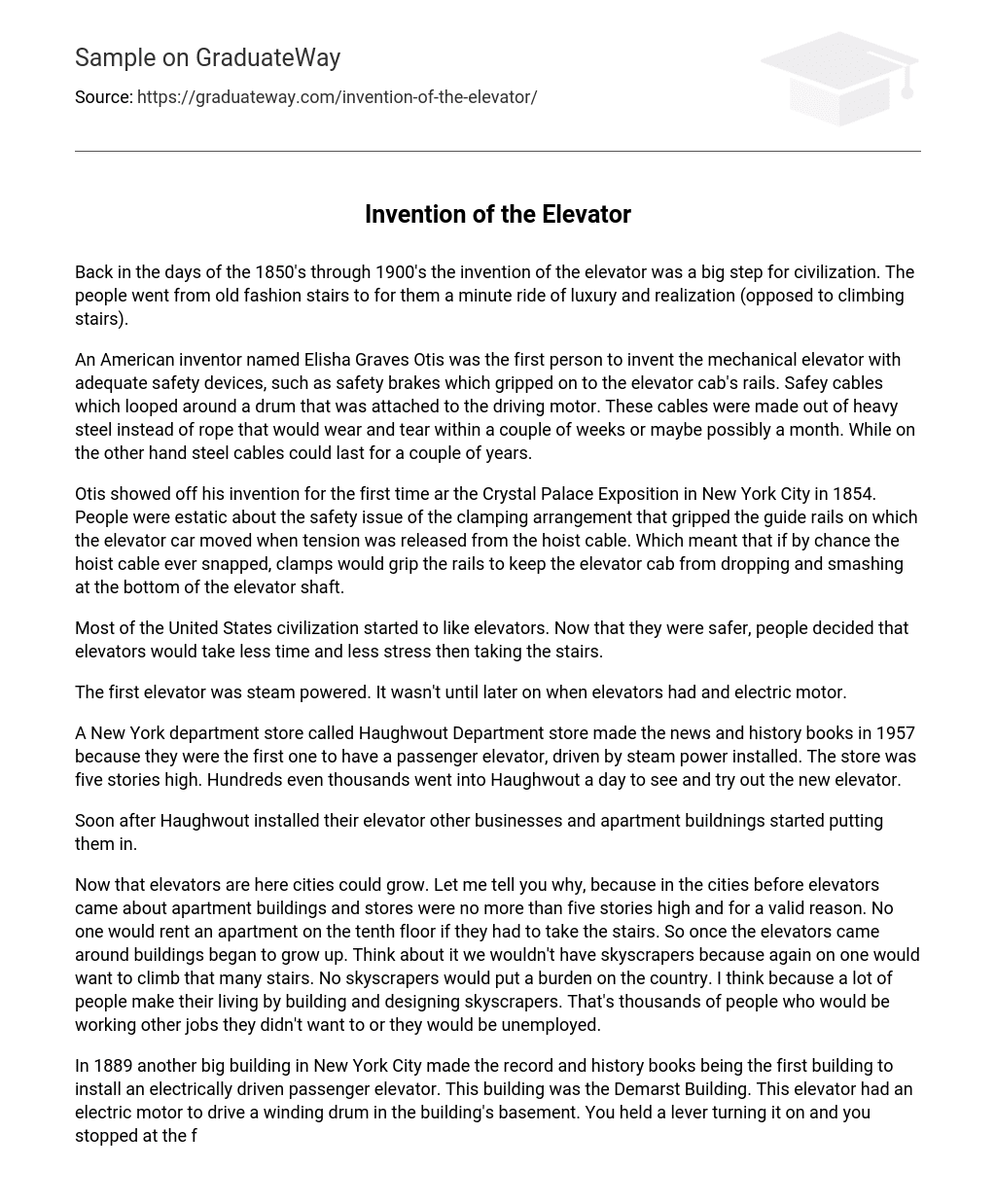During the 1850s through 1900s, the invention of the elevator marked a significant advancement for society, transitioning people from traditional stairs to a luxurious and convenient ride. Elisha Graves Otis, an American inventor, was the pioneer of the mechanical elevator equipped with safety features like safety brakes that gripped the elevator cab’s rails and safety cables made of durable steel that looped around a drum connected to the driving motor. Unlike ropes that quickly wore out, steel cables could endure for several years.
In 1854, at the Crystal Palace Exposition in New York City, Otis unveiled his invention. The clamping arrangement on the elevator car’s guide rails greatly impressed people, as it ensured safety. This mechanism ensured that if the hoist cable ever broke, clamps would hold onto the rails and prevent the elevator cab from plummeting and crashing at the bottom of the shaft. The introduction of this safety feature made elevators more popular among the United States population. With the perceived increase in safety, people realized that riding elevators would save time and reduce stress compared to taking the stairs. The first elevators were steam-powered, but later on, electric motors were incorporated into elevators.
In 1957, Haughwout Department store in New York became the first establishment to install a steam-powered passenger elevator. This innovative addition attracted daily visitors who were eager to witness and experience this new type of elevator. The introduction of elevators allowed cities to expand as more businesses and apartment buildings followed suit. Before elevators, the height of buildings was limited to five stories due to people’s unwillingness to climb stairs beyond that point. However, with the advent of elevators, buildings began rising vertically, leading to the emergence of skyscrapers. The elimination of the need for climbing multiple flights of stairs played a crucial role in fostering urban development. Skyscrapers are essential for many individuals who rely on constructing and designing these architectural wonders for their livelihoods. As a result, elevators have not only transformed urban landscapes but also sustained employment opportunities.
The Demarst Building in New York City made history in 1889 by becoming the first building to have an electrically driven passenger elevator. This revolutionary elevator utilized an electric motor to operate a winding drum located in the basement of the building. To use the elevator, one simply had to hold a lever and turn it on, stopping at the desired floor. However, it wasn’t until 1894 that the push button control panel was introduced, greatly simplifying elevator operation. The new control panel allowed users to enter the elevator and push a button for the desired floor, effectively automating the process. In case of emergencies, there was also a button available to signal for help through a ringing bell. This user-friendly system made operating the elevator so easy that even toddlers could handle it. In the same year, a hoisting apparatus powered by electricity was demonstrated in England. This apparatus employed electric power to operate a pulley located at the top of the shaft.
The use of car and counter weights in elevators allowed for traction and the movement of the cable drum to the top of the shaft. This advancement enabled the construction of taller buildings with higher elevator shafts, including New York City’s Empire State Building, which aimed to be the tallest building in the world. In addition, an interesting development occurred in 1899 when glass walls were introduced in elevators instead of metal walls. This meant that passengers could now enjoy the view while traveling up or down. A notable example is the installation of this type of elevator on Paris’ Eiffel Tower, providing passengers with stunning views of France’s illuminated cityscape at night.
Between 1854 and 1900, there was a tremendous evolution of elevators, thanks to Elisha Graves Otis and his invention. Otis’ idea not only aided the people of the United States but also spread worldwide. This innovation opened up additional job opportunities for elevator operators at hotels and department stores, elevator repair technicians, and construction workers involved in building them. So, the next time you ride in an elevator, remember the extensive effort put into its design and be reassured of your safety.





